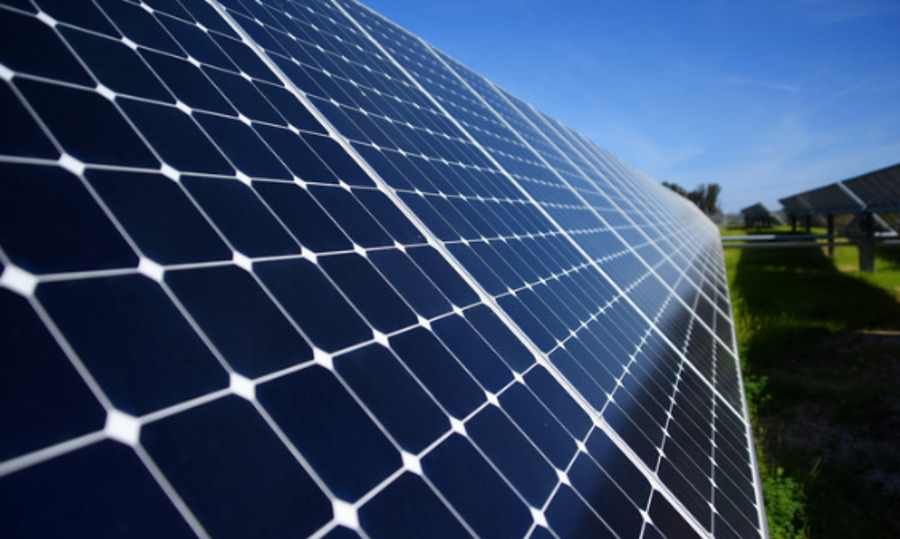Warning: count(): Parameter must be an array or an object that implements Countable in /mnt/HC_Volume_27763473/wwwroot/picgur.org/wp-content/plugins/website-monetization-by-magenet/MagenetLinkAutoinstall.php on line 457
Polish researchers have developed a way to make more efficient photovoltaic cells
The near future of photovoltaics will be determined by materials from the perovskite group, according to scientists from the Institute of Physical Chemistry of the Polish Academy of Sciences and the Faculty of Chemistry of the Warsaw University of Technology. Researchers have just unveiled an improved form of the mineral that will allow the creation of much more efficient solar cells.
Polish researchers have managed to obtain a much better variety of perovskite, whichóra contains in its crystal structure a relatively large organic ion – guanidinium cation. During the testóin laboratory tests conducted at the Federal Polytechnic University of Lausanne, the material achieved significantly better results than its predecessorsów – cells built using the primary form of perovskite.
Perovskites is a large group of materialsóin photovoltaics with a cubic crystal structure. The first known perovskite was calcium titanate(IV), a mineral discovered in Siberia in 1838 and named after Russian geologist Lev Perovsky. It soon became apparent that it was possible to shape in a controlled manner theób physical and chemical properties of perovskiteóin – by replacing in their structure the ionóin oxide, calcium and titanium with other ions.
New perovskite developed by zespół scientistóin guided by prof. Ph. Eng. Janusz Lewinski’s research was obtained by mechanochemistry method – i.e. by physical grinding of chemical substances, so called. precursorów with appropriately selected structure. Of course, everything in the right proportions. Unlike standard chemical reactions that take place in solution, the mechanochemical reaction takes place entirely in the solid phase, and chemical transformations are induced by mechanical force.
„The great advantage of mechanochemistry is the ability to quickly carry out complex chemical reactions without the need for high temperatures or harmful solventsóin organic. This is truly green chemistry, and because of its undemanding laboratory equipment, it is also wallet-friendly” – explains on the website of the IPC PAS engaged in the research Dr. Ing. Daniel Prochowicz.
Currently, one of the mainów areaóin perovskite applicationsóin is photovoltaics. – The organic-inorganic halide perovskites used here usually contain organic methylammonium cations, located at the centers of the cubicóin the crystal network. These cations easily degrade gradually under the influence of factorsóin external, e.g. Water, but also due to photochemical reactions or the action of increased temperature. We have taken próbę mechanochemical replacement of part of the cationóin methylammonium by guanidinium ions. Wybór of the latter compound was not accidental – explains in a communication made available on the website of the IPC PAS, M.Sc. Marcin Saski, a doctoral student at the IPC PAS, one of the coółautoróin a publication in a prestigious journal „Journal of the American Chemical Society”.
In the aforementioned tests carried out in Switzerland, the new perovskite achieved a higher solar-to-electric energy conversion efficiency with approx. 18 at over 19 percent. Researchers, however, emphasize that after optimizing the conditions of theóin receiving the cell can be expected to further increase performance. At the same time, they managed to raise the voltage of the generated current to 1.1 V.
„Improving the parametersóIn photovoltaic in perovskites containing guanidinium ions is perhaps not particularlyólnie spectacular, but very clear. Moreover, the increases can be seen in not one, but several important parameters. It is worth notingónote that our guanidinium perovskites contain a less volatile amine and are more resistant to the effects of external agentsóin the external environment than the parent perovskite. Higher durability of photovoltaic cells is a significant argument in favor of their commercialization” – emphasizes prof. Lewinski.

